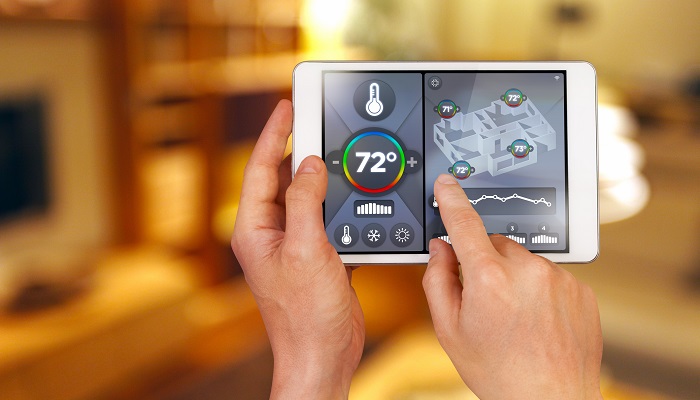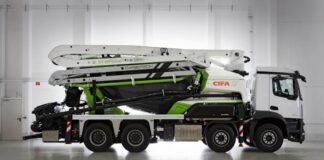HVAC automation sustainability has gone on to be widely recognized as the solution to numerous sustainability concerns, with everybody, right from thought leaders in IT to homebuyers, very well aware of its benefits. HVAC automation happens to play a crucial role in terms of regulating temperature across all types of buildings.
THE PROS
Automation goes on to offer many benefits for sustainable temperature control
HVAC, as well as temperature automation, go on to offer numerous benefits that can very well take care of the dreams of homebuyers. So, what do the gains appear like once they happen to be completely integrated?
Minimized maintenance as well as increased equipment efficiency Longevity
Legacy HVAC systems require regular maintenance, and they tend to consume more energy as and when they get older. The cost of parts happens to be high, and upgrading can be very expensive as well as time-consuming. Numerous intelligent temperature regulation systems make use of AI and machine learning so as to enable predictive maintenance along with continuous quality monitoring.
Automated HVAC systems can also offer regular notifications with regards to their performance or alerts if they are functioning in a manner that’s unusual. This automation enables to extend the shelf life when it comes to products by allowing owners to take care of repairs before they become critical challenges.
By saving on costs and, at the same time, reducing excessive appliance waste, users can safeguard unnecessary expenses. This option happens to be highly sustainable, making it one of the best options apart from promoting awareness of energy.
Improving sustainable energy efficiency
HVAC automation sustainability tools provide homeowners and managers with a centralized platform in order to control and also make full use of climate settings with precision. Smart thermostats are indeed a highly popular choice for controlling temperature, but there happen to be other additional tools that are available, like photosensors and lighting timers, along with other supplemental devices that can help as far as temperature control is concerned.
Residents happen to have the freedom in order to adjust or even set up automations that are based on external factors like weather, humidity, time of day, and occupancy. Just take into account a scenario where a system happens to get connected to a smart city hub or even a microgrid. In such a situation, the utilities happen to have the ability to take into consideration peak times and demand while at the same time distributing energy, which can further reduce the carbon footprint. The system takes into account factors so as to create the most suitable environment for the building while at the same time ensuring that the desired energy expenditure is neither exceeded nor undershot.
Enhanced comfort and convenience
It is important to note that automatically turning on the heat or AC can elevate the quality of life and make sure of consistent utility bills. The ability to switch the settings in an app or by way of a voice control offers both mental as well as physical comfort. Each room gets seamlessly personalized to the wants as well as patterns of the resident.
Creating a cozy environment is not a compulsion for individuals who have traditional office jobs during the day. A home happens to have the ability to adjust its temperature settings so as to conserve energy throughout the working hours and then get back to the ideal temperature just in time for people to walk in the door. Smart systems happen to be adaptive, while on the other hand, standard systems happen to be static.
THE CONS
Disregarding potential issues can go on to lead to a distorted understanding of the sustainability of HVAC automation across numerous buildings and lifestyles.
Dependence on external factors and the occurrence of system failures
When a legacy HVAC system or even a thermostat stops working, there happen to be usually simple solutions that are available in order to restore its operations. The process in the case of smart temperature regulators as well as sensors happens to be more nuanced.
Performance in terms of smart technology depends on certain external factors, like the quality of sensors and also internet connectivity. Diagnosing the source of a malfunction can indeed be a complex task.
Classic HVAC systems need generators or other such backup measures, like calculators, so as to adjust settings. Setting up backup plans when it comes to IoT devices can be especially challenging to make sure of their dependability.
High financial, mental costs
The accessibility of initial costs for automated HVAC as well as sustainable temperature control monitoring could be enhanced. But the advantages of reduced maintenance and greater longevity can go on to result in lower costs in the long run. Developing an outline for a cost-benefit analysis happens to be a practical approach so as to address the challenge of the initial investment.
Apparently, certain users may also experience a major mental burden. The learning curve for people who have not used automation tools before can be pretty steep.
Therefore, if users do not learn the technology in the right way from the start, its effectiveness becomes quite questionable.
Data privacy and cybersecurity risks
So, to what extent can a technology that is more vulnerable when it comes to cybersecurity breaches and data privacy concerns than traditional HVAC systems be regarded as sustainable? If users happen to have trust issues with their devices, it may go on to increase in electronic waste production. A skilled hacker happens to have the ability to disrupt entire networks or, at the same time, manipulate the energy usage of smart temperature regulators as well as other connected devices, potentially compromising data in the process.
It is well to be noted that the IoT is filled with vulnerabilities that require stronger protective measures vis-à-vis other technologies. Besides, IoT devices lack comprehensive compliance standards as compared to other older technology systems. It is thereby important for users to remain vigilant and also stay informed about the latest regulatory advice to ensure their security is up-to-date.
Is automation the answer?
The most ideal response is that it depends on the circumstances. Investing in IoT as well as HVAC automation happens to be a worthy decision for many individuals and businesses. The data that is available consistently demonstrates positive outcomes. However, IoT goes on to offer customization choices that allow for the creation of distinct as well as personalized experiences to one and all.
Proper automation management along with tools happen to be essential in order to achieve sustainable temperature control. But there are also alternative processes available to aid energy consumption sans relying on expensive technologies.




































